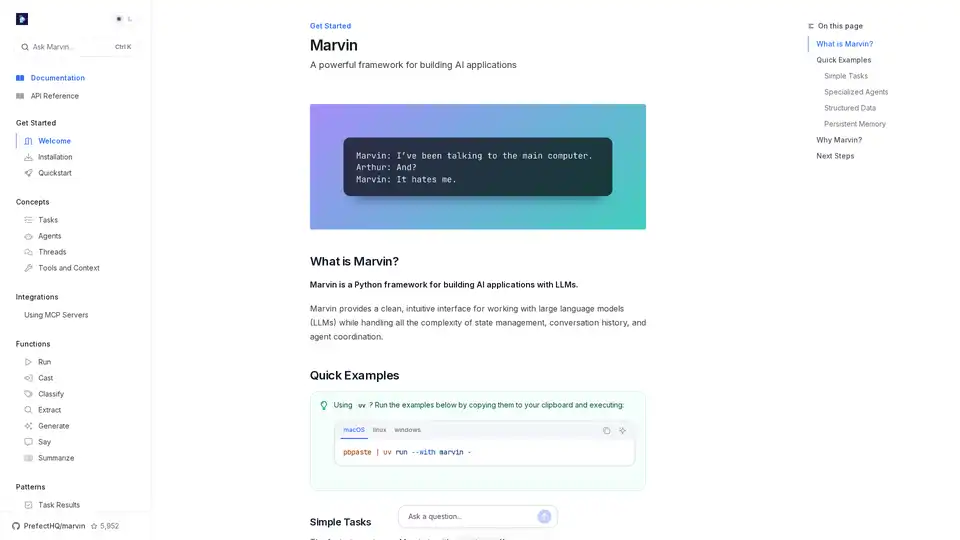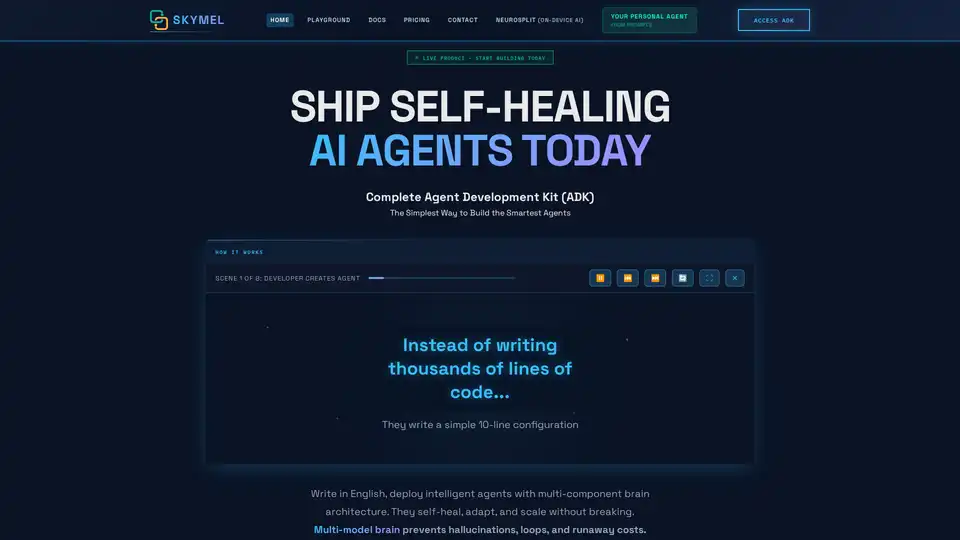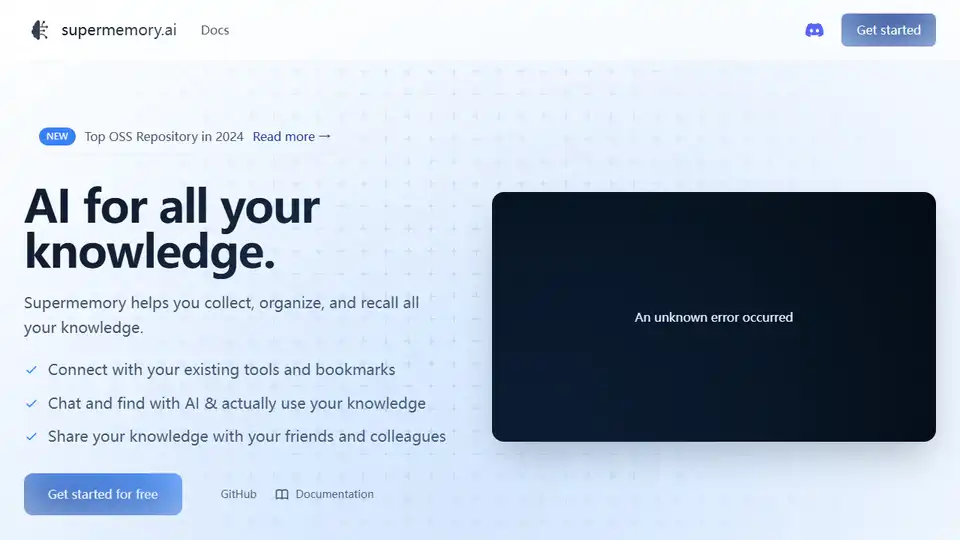
Supermemory
Overview of Supermemory
Supermemory: The Memory Layer for the AI Era
What is Supermemory? Supermemory is presented as a research and product lab focused on building the memory layer for AI, aiming to provide dynamic, human-like memory that can scale efficiently. It provides tools for both developers and end-users to leverage AI memory in their applications and workflows.
Key Features:
- Memory API & Router: Supermemory offers a fast and scalable Memory API and Router, allowing developers to add long-term memory features to their applications.
- Efficient Memory Creation & Storage: The system promises efficient memory creation, storage, and search capabilities.
- Performance: Supermemory claims to be 2x faster and cheaper than existing memory solutions.
- Cross-Client Memory: Users can access their memories across various AI clients, including ChatGPT, Claude, and Cursor.
- Integration: Supermemory integrates with 100+ AI clients via MCP (Memory Control Panel).
- Automatic Memory Creation & Inference: The system supports automatic memory creation and inference using graphs.
How does Supermemory work?
Supermemory works by providing an API and SDK (Supermemory SDK) that developers can use to integrate memory capabilities into their AI applications. It allows for efficient storage and retrieval of information, enabling AI models to retain and recall past interactions and data.
How to use Supermemory?
For Developers: Developers can use the Supermemory API and SDK to add long-term memory features to their applications. This involves:
- Integrating the API into their AI application.
- Utilizing the memory creation, storage, and search functions.
- Leveraging the router for efficient memory management.
For Users: Users can access their memories across different AI clients by using the MCP, which integrates with over 100 AI clients. This allows users to have a consistent memory experience across various platforms.
Who is Supermemory for?
Supermemory targets two primary groups:
- AI Developers: Developers looking to add memory capabilities to their AI applications can use the Memory API and SDK.
- AI Users: Users who want a unified memory experience across multiple AI platforms can benefit from the MCP.
Why is Supermemory important?
Memory is a crucial component of intelligent systems. By providing a fast, scalable, and dynamic memory layer, Supermemory enhances the capabilities of AI applications. This enables them to:
- Retain information over time.
- Personalize interactions.
- Make more informed decisions based on past experiences.
Use Cases:
- Personalized AI Assistants: Create AI assistants that remember user preferences and past interactions.
- Context-Aware Chatbots: Develop chatbots that can maintain context and provide more relevant responses.
- Enhanced AI Agents: Build AI agents that can learn from experience and adapt to changing environments.
Is there a waitlist for Supermemory App?
Yes, there's waitlist for the new MCP(Memory Control Panel).
Key Takeaways:
Supermemory offers a solution for integrating memory into AI applications. By offering a memory layer that mimics human memory, it aims to improve the performance and personalization of AI interactions. Supermemory is for those looking to enhance AI applications with long-term memory capabilities, providing a means to store, recall, and personalize data efficiently.
AI Task and Project Management AI Document Summarization and Reading AI Smart Search AI Data Analysis Automated Workflow
Best Alternative Tools to "Supermemory"

Marvin is a powerful Python framework for building AI applications with large language models (LLMs). It simplifies state management, agent coordination, and structured outputs for developers creating intelligent apps.

Scoopika is an open-source platform for building multimodal AI apps with LLMs and AI agents, featuring error recovery, streaming, and data validation.

xMem supercharges LLM apps with hybrid memory, combining long-term knowledge and real-time context for smarter AI.

Skymel ADK offers a simplified way to build intelligent, self-healing AI agents. It features a multi-model brain architecture, dynamic workflow generation, and requires no orchestration code, enabling rapid deployment and continuous learning.
